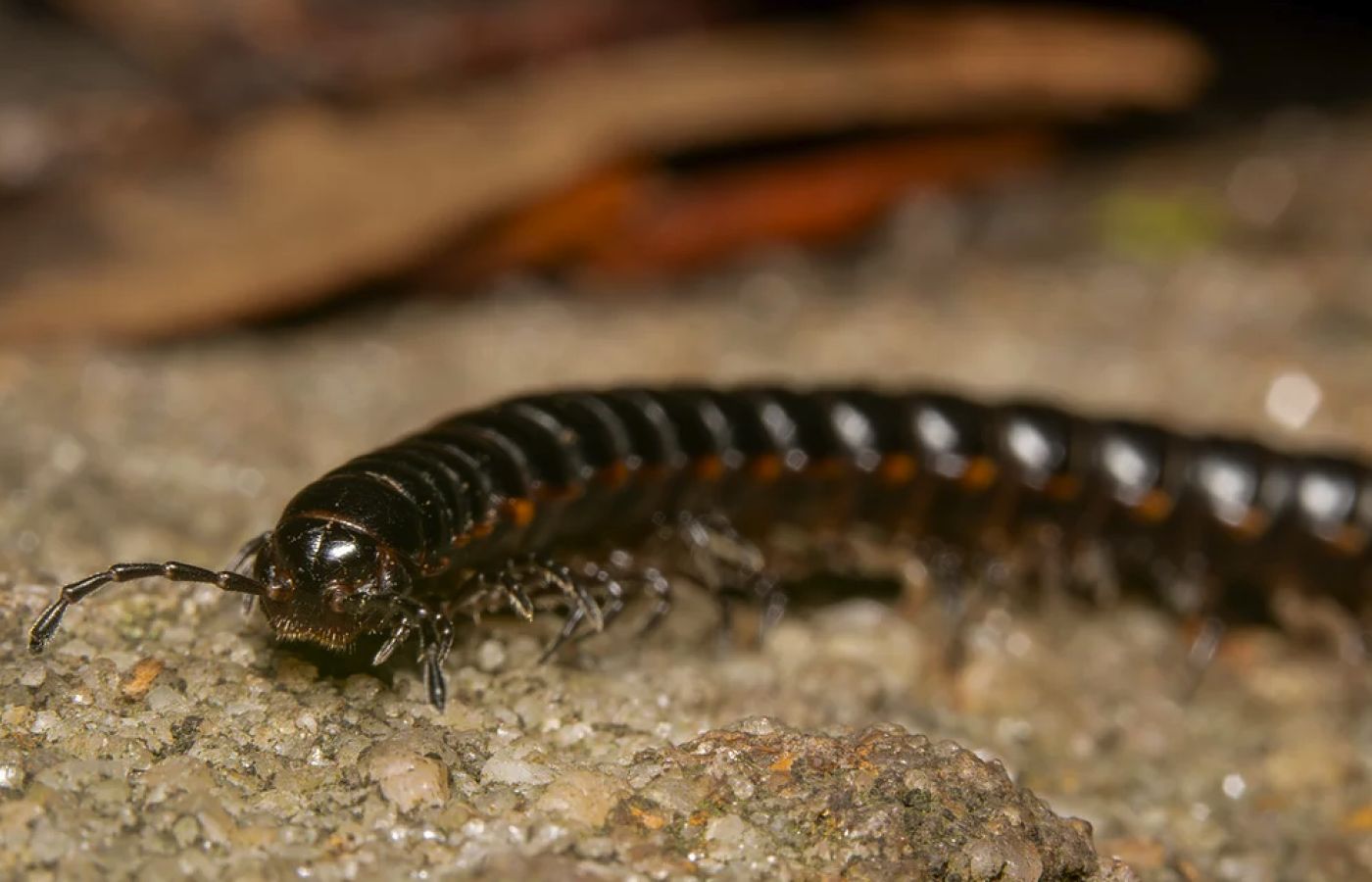In South Australia after an autumn downpour, and sometimes after spring rains, millipedes go on the march. In their tens of thousands, they leave their hiding places amongst the leaf litter to go in search of a mate.
In our local area, the main pest is the Portuguese millipede. Not a native Australian species, it first marched into Port Lincoln in the 1950s. Without natural local predators, nowadays their population has grown across southern Australia in both numbers and nuisance!
What are millipedes?
Millipedes are arthropods, not insects. They’re slow-crawling, have rounded bodies and 2 pairs of legs on each body segment (centipedes are fast-moving and have one pair per segment)
Portuguese millipedes have black bodies and give off a pungent secretion when they’re agitated. The secretion, is a defence mechanism, making them distasteful to predators such as birds.
Millipedes hatch with just three pairs of legs. They can grow up to 350 pairs in their two-year lifetime. This is 300 less than the ‘thousand feet’ the name millipede suggests!
Why do millipedes come into my property?
Millipedes are most active at night. Light attracts Portuguese millipedes e.g. house lighting and light coloured surfaces, such as white exterior walls.
How do millipedes get into my property?
Portuguese millipedes get into your property through external entry points and external cracks in plaster or brickwork.
How to keep millipedes out of your home:
- Seal and block any exterior cracks and holes in brickwork.
- Fit draft excluders and screens.
- Turn off external lights.
- Use curtains, blinds, and weather strips on doors to reduce the amount of light coming from your house.
- Use effective door seals.
- Eliminate food and shelter areas around the house by reducing areas covered with mulch and compost.
- Use smooth surfaces e.g. polythene and/or glass around the house to prevent millipedes from getting a foothold and being able to climb.
- Install light traps to attract millipedes away from your home.
- Call Spiderman SE.
How does Spiderman SE get rid of millipedes?
Prevention is better than cure, so your best strategy to avoid a millipede invasion is for us to apply an insecticide to the perimeter of your home, paying attention to flower beds and building entry points. We’re thorough, professional and won’t leave a mess behind.
The products we use have an immediate effect, killing all millipedes that come in to contact with the insecticide. If the insecticide remains undisturbed it should give some protection against future millipede infestation. Our treatments are good, but if you suffer major infestations each year, you may still get a few invaders after our treatment.
If you’re currently suffering an invasion, give us a call. We can provide immediate treatment that will stop millipedes in their tracks.
Remember, if you want to deal with the problem yourself, millipede secretions permanently stain clothes and surfaces, and can irritate the eyes, so it’s best to sweep up millipedes rather than crush them.
Are millipedes dangerous to humans?
You can pick them up, but you wouldn’t want to eat one! They don’t bite but some millipedes can secrete a toxic fluid, which also gives off an unpleasant smell. If you’ve ever trodden on a few you’ll know the smell. They’ll permanently stain clothes and flooring, so don’t stamp on them!
If you’re fed up trying to keep millipedes out of your home and have tried several preventions without success…then it’s time to call in the professionals at Spiderman SE. We’re experienced in getting rid of and managing millipede infestations in the local area.
If you have a millipede infestation, please don’t worry…call Spiderman SE

